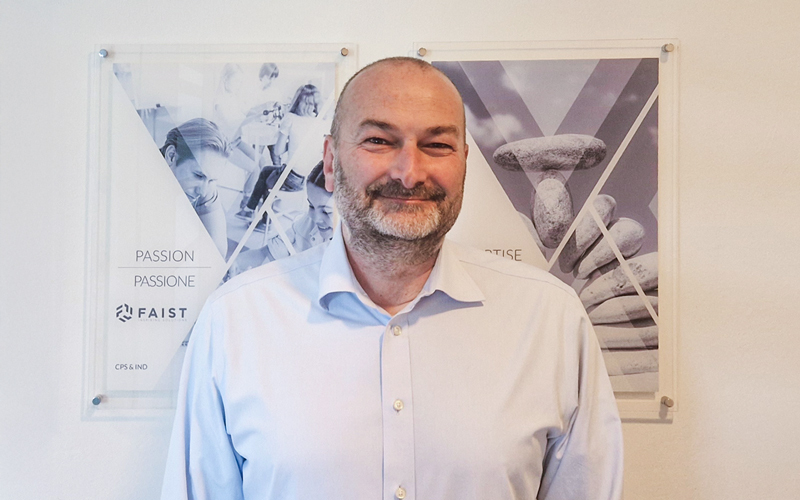
In recent years, the global automotive industry has undergone a series of disruptive events that have reshaped how OEMs (Original Equipment Manufacturers) and Tier 1 suppliers manage orders and supply chains. From the pandemic and semiconductor shortages to geopolitical tensions and the challenges of the green transition, these factors have compelled a radical rethinking of procurement, planning, and investment strategies.
The impact has extended beyond the top tiers of the supply chain, quickly cascading to Tier 2 and Tier 3 suppliers. Companies at all levels have been forced to revise processes, adapt relationships, and reassess strategic priorities. The pressure to reduce lead times, increase production flexibility, and minimize inventory levels has become a global constant, though it plays out differently across geographic markets.
In Europe, the shift toward sustainable mobility has introduced uncertainty, as reflected in first-quarter 2025 car sales data, which show a -0.4% decline compared to the first quarter of 2024. Meanwhile, China continues to post strong growth (+12.9% in the first quarter of 2025 compared to the same period the previous year), fueled by aggressive industrial policy and fast adaptation. The U.S. market also registered positive momentum (+4.8% in the first quarter of 2025 vs. the same period in 2024), likely linked to quicker adoption of new technologies.
In this evolving context, groups such as FAIST Control Systems are undergoing a true organizational and technological transformation. Being a Tier 2 supplier today means not only ensuring quality and reliability but also responding swiftly to program fluctuations, demand uncertainty, and increasing product customization.
We spoke with Eng. Massimo Mattoli, Chief Operating Officer of FAIST Control Systems and Industrial BU, for his perspective on these changes. His insights shed light on the company’s strategic response to market signals and how these shifts are shaping organizational structures, required competencies, and financial risk profiles. This interview offers a valuable perspective not only on FAIST’s positioning but also on the broader transformations redefining the global automotive industry - where companies must continually adapt to build the mobility of the future.
In recent years, what have been the most significant changes in order management strategies by OEMs?
Massimo Mattoli: We’ve seen a profound shift in how OEMs plan and manage orders. The key trends include greater demand for flexibility, increased forecast volatility, and ongoing pressure to shorten lead times. In the aftermath of the pandemic and semiconductor crisis, many OEMs significantly reduced inventories—both for finished vehicles and components—moving from long-term planning to demand-driven production models.
This has compressed response times across the supply chain and introduced major volume variability. According to industry data, vehicle stock levels in Europe dropped by 30% between 2019 and 2023, while average lead times required from Tier 1 and Tier 2 suppliers were reduced by over 40%.
In short, flexibility and responsiveness have become critical competitive factors.
What are the main differences in order management policies between North America, Asia, and Europe?
Massimo Mattoli: The differences are substantial. In North America, OEMs tend to rely on medium- to long-term forecasts, and program adjustments are generally managed with transparency and negotiation. In China, the emphasis is on speed and flexibility—requirements often shift at very short notice. Europe sees greater supplier involvement in planning, but it too is moving toward higher variability and tighter service expectations. What’s common across all regions is rising complexity and the need for faster response times throughout the supply chain.
How are these trends affecting internal planning and operations for Tier 2 suppliers?
Massimo Mattoli: We've had to make our processes leaner, more digital, and better connected. We’ve implemented EDI (Electronic Data Interchange) and APS (Advanced Planning and Scheduling) systems, fully integrated with our ERP for demand simulation. Real-time collaboration with Tier 1s and our own suppliers has become essential to quickly react to OEM changes.
We're also investing in selective, dynamic safety stock strategies. The central challenge is finding the right balance between operational efficiency and the agility to respond to rapid market shifts.
What are the main challenges in dealing with Tier 1 suppliers across different regions?
Massimo Mattoli: In Asia, the key challenge is reactivity—you must be ready to adjust production and logistics immediately. In North America, precision in managing quantities and delivery timelines is paramount. In Europe, the focus is on transparency and collaboration, but pressure is mounting to further improve lead times and flexibility. In every case, adaptability is the critical success factor in Tier 1 relationships.
What are the long-term implications of these trends for Tier 2 suppliers?
Massimo Mattoli: On the positive side, these developments encourage process innovation, digital transformation, and stronger collaboration across the supply chain. They improve visibility and responsiveness.
However, they also increase financial risk—especially for smaller Tier 2 suppliers, who may be required to absorb sudden changes in demand without solid contractual guarantees. The risk of disruption grows: one small bottleneck can halt downstream production, as we saw during the pandemic and chip shortage.
This constant pressure can also limit innovation, as companies become more cautious about investing in new products or technologies when faced with elevated operating risks. In the long run, those who can balance efficiency, flexibility, and innovation—while thinking beyond traditional models—will be best positioned for success.
What strategies is FAIST adopting to address these shifts, and what best practices would you recommend across the supply chain?
Massimo Mattoli: We continue to invest in the digitalization of interconnected processes—leveraging ERP, APS, predictive analytics, business intelligence, performance improvement projects, and AI tools. We’re also focused on team training and on developing production lines that are faster and more flexible, with a balanced mix of manual and automated operations.
Developing flexible planning capabilities and maintaining close communication with Tier 1s and OEMs is crucial. At FAIST, we encourage a collaborative, skilled team environment to ensure we stay responsive and aligned with any market shift.
The automotive sector—especially in supply chain and operations—is undergoing a fundamental transformation driven by global disruptions and changing priorities. To navigate this new landscape, companies must invest in digital systems, talent development, and flexible planning tools.
Best practices include fostering open communication with customers and suppliers, sharing timely information, and adopting agile production models that blend efficiency with responsiveness. These capabilities will be essential to remain competitive and resilient in the evolving automotive ecosystem.



